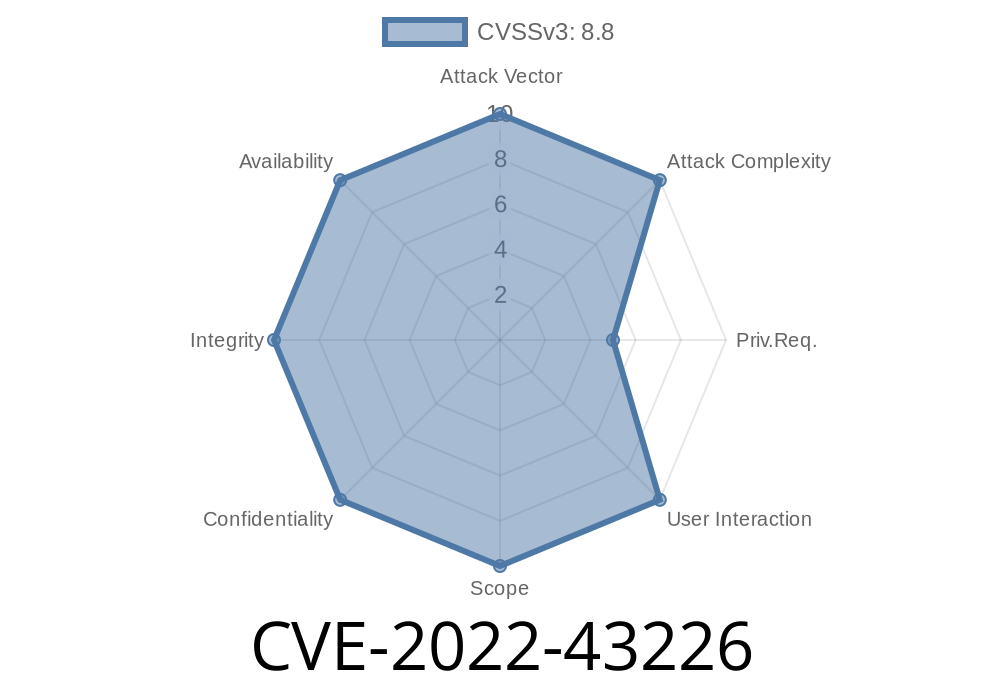Security researchers have identified a critical SQL injection vulnerability in the Online Diagnostic Lab Management System (ODLMS v1.). This powerful tool, used by numerous healthcare organizations to manage lab tests and appointments, handles sensitive patient data. The vulnerability (CVE-2022-43226) can put the privacy and integrity of patient information at risk if not patched immediately.
Background
Online Diagnostic Lab Management System (ODLMS) is a renowned application preferred by diagnostic labs and healthcare organizations for managing test reports and appointments. Recently, security researchers discovered a severe SQL injection vulnerability in the software.
SQL injection (SQLi) is a type of code injection attack that targets applications using SQL databases. Through this vulnerability, attackers can send malicious SQL statements intended to compromise, manipulate, or steal sensitive data. In this case, the identified weakness was traced to the id parameter at /odlms/?page=appointments/view_appointment, which may be exploited by malicious attackers without authentication. The details of the exploit follow below.
Vulnerability Details
The critical vulnerability is located in ODLMS v1., where the backend server fails to validate and sanitize the user-supplied data correctly. Below is the affected code snippet:
//File: view_appointment.php
$id = $_GET['id'];
$sql = "SELECT * FROM tbl_appointment WHERE id='$id'";
$result = mysqli_query($conn, $sql);
In the code snippet above, the $_GET['id'] variable directly includes user-supplied input into the SQL query without proper validation or sanitization. An unauthenticated hacker can take advantage of this vulnerability by injecting malicious SQL statements into the query, potentially compromising valuable patient records.
With the unfiltered 'id' parameter, an attacker can craft a URL triggering the SQLi vulnerability
http://example.com/odlms/?page=appointments/view_appointment&id=[SQLi_payload]
[SQLi_payload] would contain the malicious SQL code, allowing unauthorized access to the sensitive data stored in the ODLMS database.
Mitigation and Recommendations
Although there is no official patch for CVE-2022-43226 at the time of writing, lab management services using ODLMS v1. can implement several mitigating controls:
1. Validate and sanitize user inputs: Ensure all input fields (including the 'id' parameter in this case) accept only valid characters and are sanitized properly by adopting a strong input validation mechanism.
2. Parameterize SQL queries: Use prepared or parameterized statements with placeholders, making it harder for hackers to inject malicious SQL code.
3. Least privilege principle: Limit access to resources, ensuring each user is granted only the minimum levels necessary for their role. This would mitigate the risk of unauthorized access or manipulation of data.
4. Monitor and log traffic: Continuously monitor and log traffic to identify and investigate suspicious activities or possible intrusions.
5. Regularly update software: Ensure any third-party software, including ODLMS, is regularly updated to address security vulnerabilities.
Original References
1. NIST National Vulnerability Database (NVD)
2. Exploit Database
3. GitHub Security Advisory
Conclusion
The discovery of the SQL injection vulnerability (CVE-2022-43226) in the Online Diagnostic Lab Management System (ODLMS v1.) is a reminder of the importance of secure software development practices. Healthcare organizations must take appropriate measures to ensure the confidentiality, integrity, and availability of sensitive patient data. Implementing robust mitigating strategies and staying up to date with the latest security patches are essential to maintaining a secure environment.
Timeline
Published on: 11/02/2022 17:15:00 UTC
Last modified on: 11/03/2022 03:35:00 UTC
